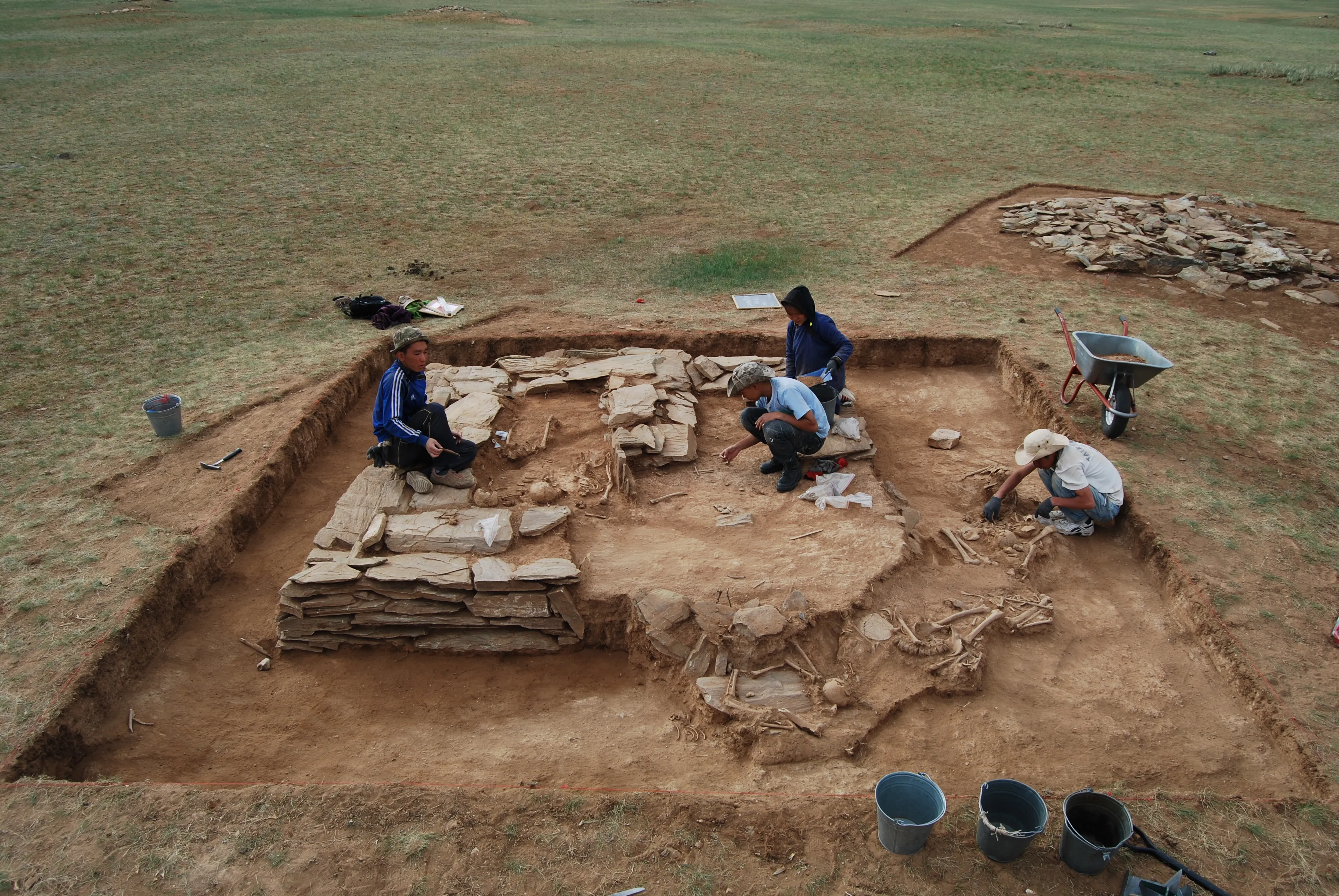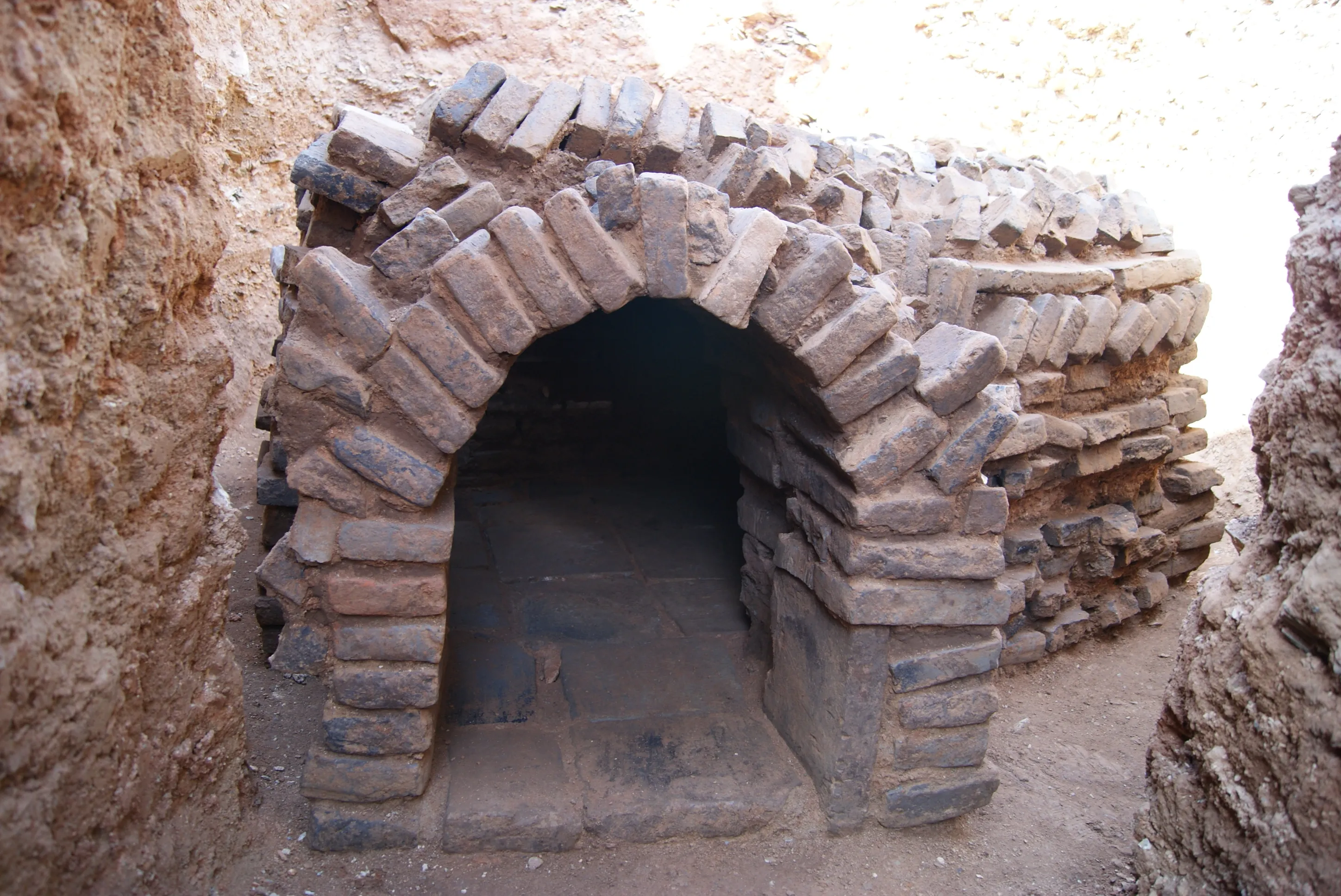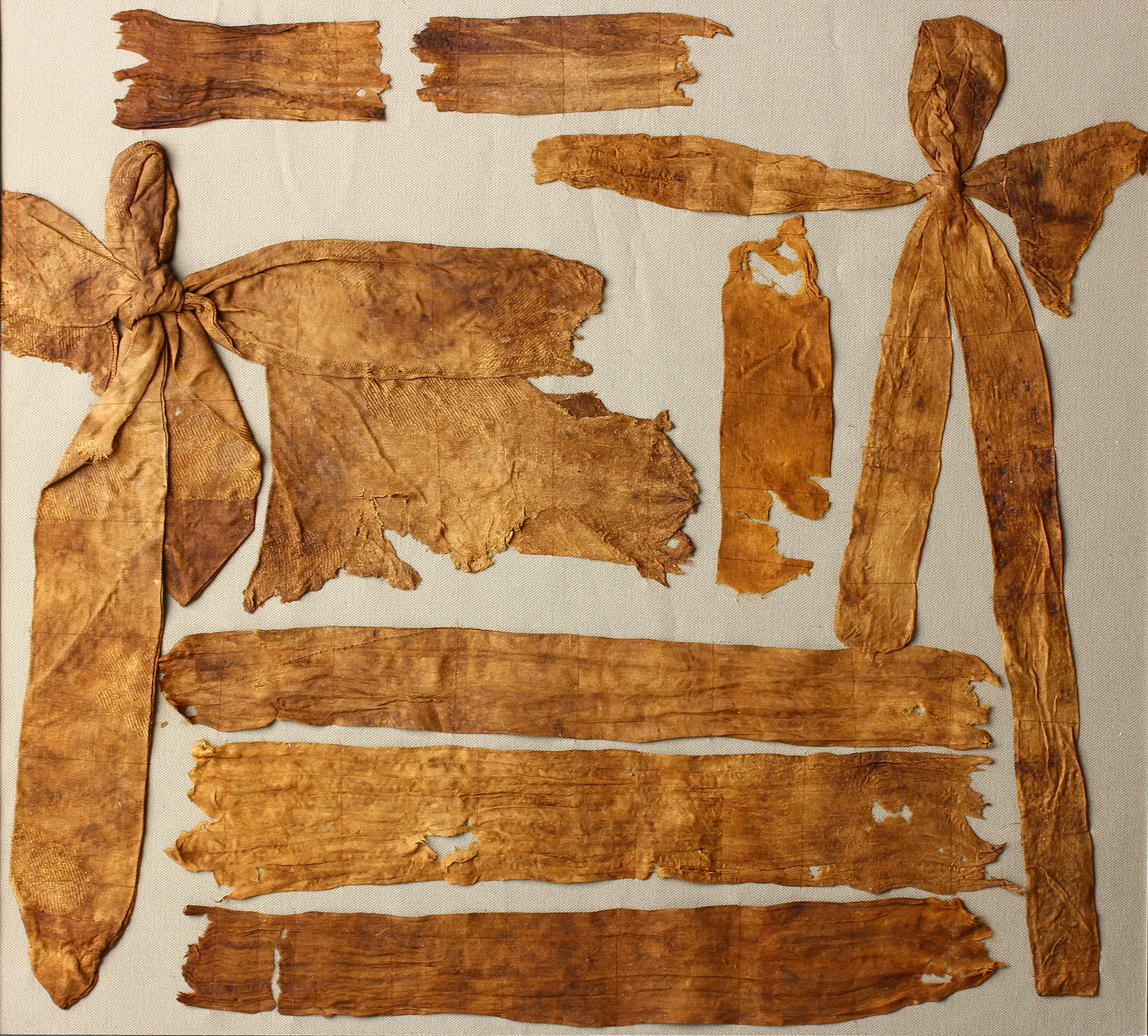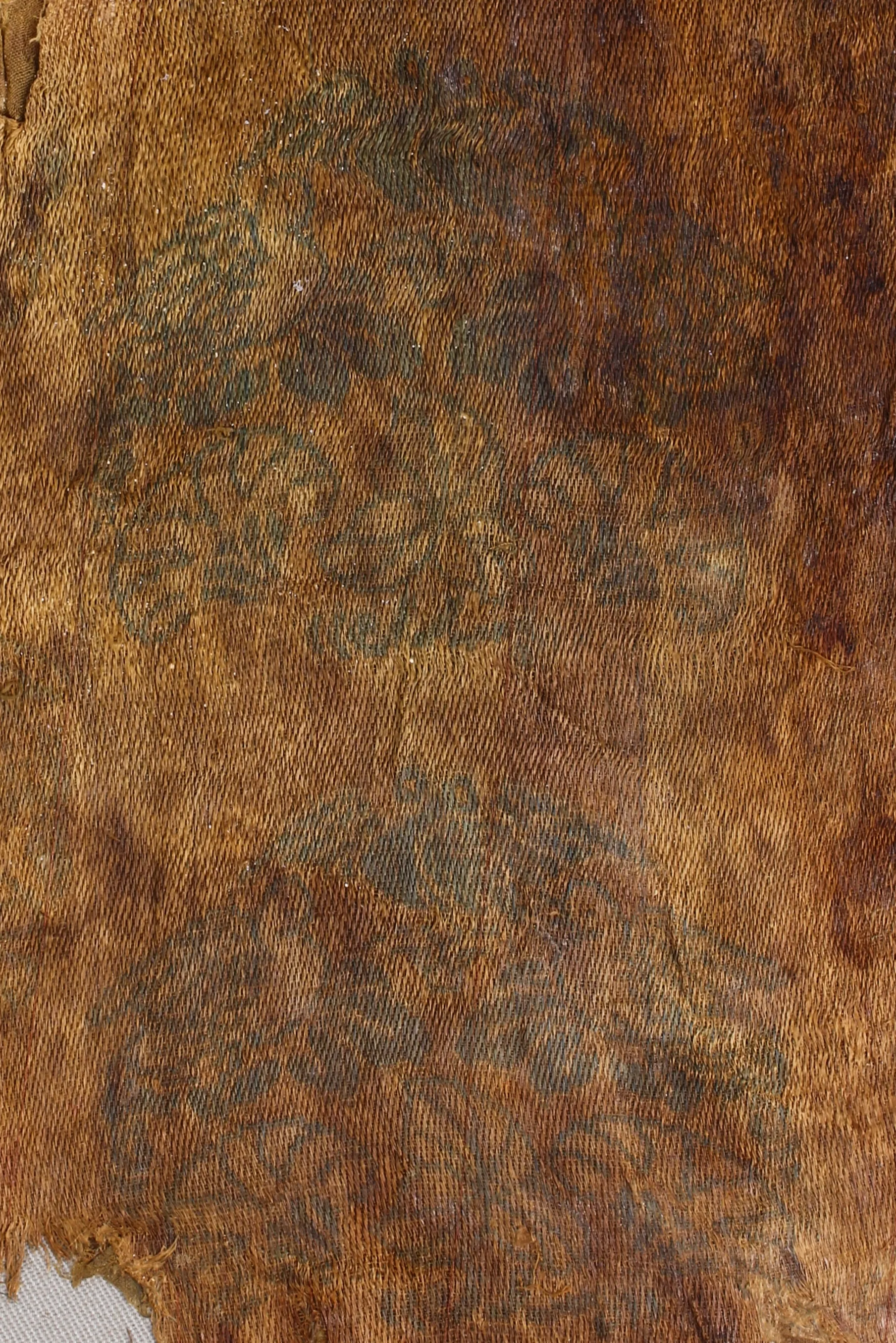
The Uyghur Cemetery Olon Dov
The Olon Dov cemetery is located 12 km west of the ancient Uighur capital of Karabalgasun in the Khotont Sum region of Arkhangai province. Numerous graves marked by mounds of earth and stones have been preserved here in a small valley open to the east.
The Construction of the tombs
The construction of the tombs varies. Some consist of square layers of stones covered by a mound of earth, but there are also graves made of mud bricks or burnt bricks. Roof tiles have also been preserved in places.
Some of the tombs are surrounded by square walls painted white, red, green or black on the outside.
The construction and burial customs of the graves excavated at Olon Dow are very different from those of the nomads in Mongolia at the time, and double burials are common. If we compare the building materials used and the grave goods, there is much to suggest that these graves were the burials of urban dwellers involved in trade and crafts rather than the graves of shepherds. In other words, they are most likely the burial grounds of the inhabitants of the Uyghur capital of Ordubalyk/Karabalgasun, which lies a few kilometres away.

Coins and Textiles
Of particular note is the domed tomb of a Uighur woman discovered in 2011. The remains of a silk cap with a golden floral pattern and the remains of her silk robe were found in her tomb. A comparison of the silk weaving technique and pattern decoration revealed that the fabric dates from the mid-8th century, and the design of the knotted silk bands – and the skirt of the robe – resembles that of the later proto-Mongolian Liao Dynasty.
In addition, a coin called “Hui-chang-kai-yuan” was found in tomb 34 in the Olon Dow cemetery, minted in 845, the fifth year of the reign of Wuzong of the Tang dynasty. Radiocarbon dating of the vaulted tombs also suggests a date between 870-892, which is closer to the late period of the city after its destruction known from written sources. This research may indicate that not all Uyghurs left their capital after the Yenisei Kirghiz attack in 840. It is conceivable that some of the Uyghurs remained in their original homeland and contributed to the prosperity of the later states in Mongolia and to the development of the ethnic group.
The clothing remains



